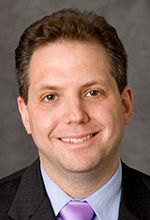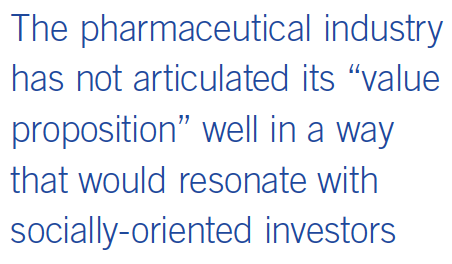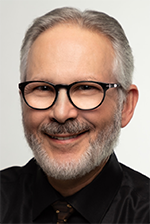Impact Investing and R&D
Pharmaceutical Executive
Private equity investment and venture capital have long spurred R&D efforts for hard-to-treat conditions. Joining the mix of late has been impact investing and the opportunities for the socially-conscious to influence drug development-and reap potential benefits in health outcomes and financial return.
Exploring the rise of environmental, social, and governance investing and venture philanthropy in accelerating drug development
There is no shortage of diseases and conditions for which a cure is desperately needed. Just think of cancer, Alzheimer’s, and autoimmune disease. Despite the strides made in recent years in developing treatments, the road to a cure for many of these conditions can be a meandering path beset with pitfalls, frustration, and failure to hit pay dirt.
Hence, there is a never-ending need for funding drug research and development. Traditional private equity investment and venture capital have been around for years. In many instances, these types of investment have had a positive impact on therapeutic research and commercialization efforts.
But now, enter impact investing; environmental, social, and governance (ESG) investing; and venture philanthropy-a version of impact investing. Along with them come opportunities for the socially-conscious to influence drug development, and reap benefits-positive health outcomes as well as a financial return.
Creating social impact
Impact investing and venture philanthropy entail generating beneficial social or environmental outcomes by investing in certain industries or social efforts, in addition to obtaining financial gain for oneself. These investments give socially-conscious investors a results-based approach to investing. They differ from traditional philanthropy in which donors do not expect to receive financial reward. These investors challenge researchers and company executives to contribute to the public good as they create profit.
Impact investing and venture philanthropy tend to be in the realm of high net-worth people. And then for those who do not have millions in assets, there’s ESG investing, in which people determine how to invest based on their individual value system, explains Les Funtleyder, healthcare portfolio manager at E Squared Capital Management, and a Pharm Exec Editorial Advisory Board (EAB) member.
Les Funtleyder

Investing in pharmaceutical R&D would appear to be a good fit for these types of investors, who could be an individual, a group of individuals, or venture-like funds. “By definition, if you create a drug that cures people, you’re having a positive impact on society,” says Funtleyder, who also teaches healthcare investing at Columbia University.
Funtleyder says that while ESG is more common in Europe, it is expected to grow in the US, especially among millennials who want to invest in organizations that align with their values. In healthcare, ESG investors would avoid companies that are involved in mercenary pricing of their drugs, for instance. ESG investors would look for organizations with diverse employment or diversity on the boards of directors. In developing countries, ESG investors might seek out organizations trying to improve access to healthcare through the establishment of local clinics.
Ideally, investing in a company would be based on an investor’s values, such as developing drugs for unmet needs. Targets might include acute, orphan, or pediatric diseases. “Generic companies have a role to play. They could be the guys in the white hat, lowering costs,” notes Funtleyder.
Opportunities in pharma
Surprisingly, the Global Impact Investing Network’s eighth Annual Impact Investor Survey found that only about 5% of impact investment efforts were directed to the healthcare sector in 2018. The survey’s findings represent more than 200 respondents’ perspectives on how the impact investing industry overall continues to evolve.
The lower percentage of healthcare investments may be attributable to the belief that healthcare investing may be more risky, explains Funtleyder. But there have been many missed opportunities in the pharma area, and much of that may be due to a lack of communications on the part of the industry, he asserts. “Many people don’t necessarily understand how difficult it is to make (and receive regulatory approval for) a drug,” says

Funtleyder.
He believes the pharmaceutical industry has not articulated its “value proposition” well in a way that would resonate with socially-oriented investors; people generally do not understand the process involved in producing a drug, says Funtleyder. “You don’t often see biologists or medicinal chemists in ads talk about how cool the science is, and what they have to do to get a drug to market,” he notes.
Still hope for dementia
One investment fund focused on a specific disease is the Dementia Discovery Fund (DDF). The fund facilitates the development of effective drugs for the treatment of dementia. It aims to invest in early-stage research and is an example of a venture capital fund amenable to impact investing and venture philanthropy.
The DDF is the first venture capital fund to specialize in dementia. By focusing the 2013 G8 meeting on the global challenges of dementia, David Cameron, former UK prime minister, advocated for the disease as well as for more investment.
Then, the newly formed World Dementia Council worked with the UK’s Department of Health and Social Care to address dementia specifically. This led to a partnership with the charity Alzheimer’s Research UK and some major pharma companies. Together, they formed the initial investment in the DDF. SV Health Managers LLP currently manages the fund.
The DDF has four key areas of scientific focus:
- Inflammation, immunology, and microglial function
- Membrane contact site biology
- Mitochondrial dynamics
- Synaptic physiology and structure
Angus Grant, CEO of the DDF, explains that the fund invests in early-stage projects that might not receive company or government support because of the large amount of innovation and investment needed. “We hope to fill an area where there’s a void by funding early research, and de-risking it for biopharma to step in,” says Grant.
“We have to be very disciplined in our investing strategy,” he adds. “Our focus is on patient benefit. Patients benefit when a physician can prescribe a drug. We have to find the right early-science projects-invest in them, nurture them, and get them into late-stage clinical trials where biopharma can take over.”
The DDF looks for projects in which scientists have identified specific pathways in patients that could be modulated for clinical benefit. But the fund also looks downstream to see if the research will lead to a drug that could be prescribed. To find projects with potential, DDF relies on a team of scientists with expertise in
Angus Grant

neurodegeneration, inflammation, and other fields. They scour the scientific literature, attend scientific conferences, and meet with academic and company researchers, advocacy groups, and others. DDF started off with about $130 million in investments and eventually reached about $325 million with help from a diverse group of investors, including patient advocacy groups, industry, AARP, Bill Gates, commercial insurance companies, and the NFL Players Association. “Usually these investment funds are set up to have a return on investment in a 10-year window,” says Grant. “But because dementia is a very difficult area to tackle, it is a 15-year fund.”
The DDF’s investment efforts have begun to pay dividends. In February, Alector, a clinical stage biopharmaceutical company in which the DDF invested, commenced trading as a public company, following the successful completion of its $176 million IPO. The company is pioneering immuno-neurology, a therapeutic approach for treating neurodegeneration. Alector was the DDF’s first investment in 2015, and the completion of its IPO is a significant milestone that supports DDF’s mission. Alector is one of 16 companies and translational projects in which the DDF has invested.
Investing in repurposing
Meanwhile, Cures Within Reach is utilizing venture philanthropy and impact investing to generate financing for medical repurposing research, and to drive less expensive treatments to patients more quickly. In repurposing, the organization aims to advance new indications of already-approved drugs, devices, and nutraceuticals.
The organization looks for technologies that are affordable to test, and which can be quickly incorporated into clinical settings. Newly validated repurposed therapies usually have completed Phase II clinical trials. They often are generic drugs.
Cures Within Reach requests repurposing proposals from academic, government, and company-based scientists. Selected proposals are reviewed and independently vetted. The organization connects potential funders to projects, and facilitates the entire research process, from the agreement with academic or company scientists, to reporting the progress of the research through completion, publication, and dissemination of results.
Funders can be wealthy individuals with interest in a disease that a family member may have or had; disease-specific nonprofit organizations interested in repurposing research; or corporations and foundations.
“Cures Within Reach does not ordinarily pursue development to the FDA approval stage because the cost would be prohibitive for the types of investors this work attracts,” says Dr. Bruce Bloom, CEO. “Our endpoint is often a robust human clinical trial, in which the data clearly support use of a therapy in a new indication. The results are published in a peer-reviewed journal. Physicians can review this information and prescribe the drug if they want.”
Bruce Bloom

For example, Bloom points to the several rare pediatric diseases for which Cures Within Reach has validated a repurposed therapy. “These first-in-human, proof-of-concept clinical trials are enough for most physicians to consider prescribing the drug, which are safe,” he explains.
Cures Within Reach has made several investments. “One of our donors is a Chicago-based philanthropy which supported us to invest in an early-stage commercial repurposing company that met our criteria,” says Bloom. “So we established a SAFE (simple agreement for future equity) agreement with them, which gives Cures Within Reach an option to receive equity if a merger or commercialization takes place.”
Social impact bonds
The organization also is working on impact investing arrangements in which the funders could receive financial return, according to Bloom. Toward this end, Cures Within Reach creates social impact bonds, using investment dollars, but not philanthropic dollars, for repurposing research. “The donor does not receive a tax deduction for giving us the money. We give the money to commercial or academic entities to conduct the repurposing research, much like venture capital,” says Bloom. “When a repurposed therapy impacts patients, we get a return, and so would our funders.”
Payer impact
Social impact bonds also would be based on up-front agreements with government payers. The payers would agree to give impact investors financial returns that emanate from system-wide healthcare cost savings generated by the repurposed successes, says Bloom. Savings could include improved patient outcomes or fewer patient hospitalizations, which translate into savings for the overall healthcare system.
To specifically address unmet needs in cancer, Cures Within Reach recently established Cures Within Reach for Cancer. The cancer organization is following a similar blueprint as its parent entity in repurposing research. At first, it is targeting about 100 non-cancer generic therapies that have shown efficacy for cancer in early-stage clinical studies.
“We’re taking drugs that have already been FDA-approved for indications other than cancer and which are off-patent, and repurposing them for cancer. These drugs are readily available, inexpensive, and safe,” says Laura Kleiman, founder and executive director of Cures Within Reach for Cancer.
Laura Kleiman

To gather data on potential investment opportunities, the organization is constructing the Oncology Repurposing Engine™, software for systematic evidence synthesis and analysis. The platform uses artificial intelligence to aggregate preclinical and clinical data on repurposed therapies and prioritizes repurposing opportunities.
The issue is that there has been little funding for Phase III cancer clinical trials for these generic drugs, which require a significant investment, according to Kleiman. Thus, her organization is also harnessing social impact bonds as a way to leverage healthcare savings to gain ROI for impact investors. “The greatest challenge has been getting insurance companies and government payers on board to provide success payments,” notes Kleiman.
Combining data and investment models
The Kraft Precision Medicine Accelerator at Harvard Business School is catalyzing research in precision medicine. The Accelerator was established in 2016 with a $20 million endowment from the Robert and Myra Kraft Family Foundation. The organization brings together business and healthcare leaders to drive progress in both investment and data models. It is headed by Richard Hamermesh, senior fellow at Harvard Business School and Kathy Giusti, senior fellow and founder of the Multiple Myeloma Research Foundation.
“Our purpose is to play a catalytic role in identifying challenges and obstacles and improving results,” says Hamermesh. “We identify the key challenges and the key obstacles that are slowing progress in the field. A lot
Richard Hamermesh

of progress in research is being made, and a lot of money is being invested, but the cycle could be improved and shortened.”
Impact investing has become an increasingly hot area, Hamermesh believes. “People want to know that in addition to earning a return, their dollars are having a social impact,” he says. “This market is led by a number of banks with clients looking to put a lot of money to work.”
The Accelerator has established teams of professionals that find sources of potential scientific research and funding. Among their tasks, they perform “landscapes” to identify new impact investing models and to find interested banks and investors. Giusti explains, “We look to build on models in venture philanthropy as well as models with banks and venture capital funds in our role as a catalyst. We try to marry impact investing with important areas of scientific innovation.”
Whether it involves data or investment models, the Accelerator stays in close touch with leaders in the precision medicine space, from oncology to Alzheimer’s, to drive cures faster. In one effort to exchange ideas, the Accelerator held a meeting in February to discuss how it could accelerate precision medicine through better investment models, Hamermesh says. The meeting was attended by venture philanthropists, banks, and scientific researchers who pointed out potential opportunities for investment.
Giusti further explains that the Accelerator also focuses on innovative data models. “For us, data can come
Kathy Giusti

directly from a patient, an academic center, or a pharma company,” she says. “Data modeling is important because you can’t do precision medicine without data. There is no doubt the data can then advise the investment models. Data and funding together will accelerate cures across diseases.”
Meanwhile, in April, the Multiple Myeloma Research Foundation launched the $50 million Myeloma Investment Fund, a venture philanthropy effort aimed at accelerating new therapies and diagnostics so that multiple myeloma patients have access to the best new targets and technologies. The fund is an independent, self-sustaining vehicle, and is the first and largest fund specifically focused in multiple myeloma. It will invest in seed, early-stage, or series A funding for emerging biotech companies or asset management groups.
In 2016, UBS raised $471 million for its UBS Oncology Impact Fund, an impact investing fund that supports companies developing cancer treatments. In April 2018, the fund, managed by MPM Capital, and the American Association for Cancer Research (AACR), announced the first funding gift to the joint AACR-MPM Transformative Cancer Research Grants Program to support research that accelerates breakthroughs against cancer.
The first contribution totaled $1.2 million. The fund is also due to donate a second $1.2 million to UBS’s Optimus Foundation to support emerging market access to cancer care.
Treating and curing disease requires many investment dollars. Venture philanthropists, impact investors, and ESG investors will find many opportunities in the healthcare arena to get a financial return on their investments as well as to have a positive impact in the battle against disease.
Joseph Constance is an independent writer and analyst based in New Jersey. He can be reached at jacpub@gmail.com

Addressing Disparities in Psoriasis Trials: Takeda's Strategies for Inclusivity in Clinical Research
April 14th 2025LaShell Robinson, Head of Global Feasibility and Trial Equity at Takeda, speaks about the company's strategies to engage patients in underrepresented populations in its phase III psoriasis trials.
Key Findings of the NIAGARA and HIMALAYA Trials
November 8th 2024In this episode of the Pharmaceutical Executive podcast, Shubh Goel, head of immuno-oncology, gastrointestinal tumors, US oncology business unit, AstraZeneca, discusses the findings of the NIAGARA trial in bladder cancer and the significance of the five-year overall survival data from the HIMALAYA trial, particularly the long-term efficacy of the STRIDE regimen for unresectable liver cancer.
Expanding Immune Response Testing to Support Vaccine Development
April 22nd 2025Nigel McCracken, chief operating officer, Virax Biolabs, discusses the expansion of its ViraxImmune platform into areas such as transplant monitoring, vaccine efficacy, latent virus reactivation, and CAR T cell therapy.